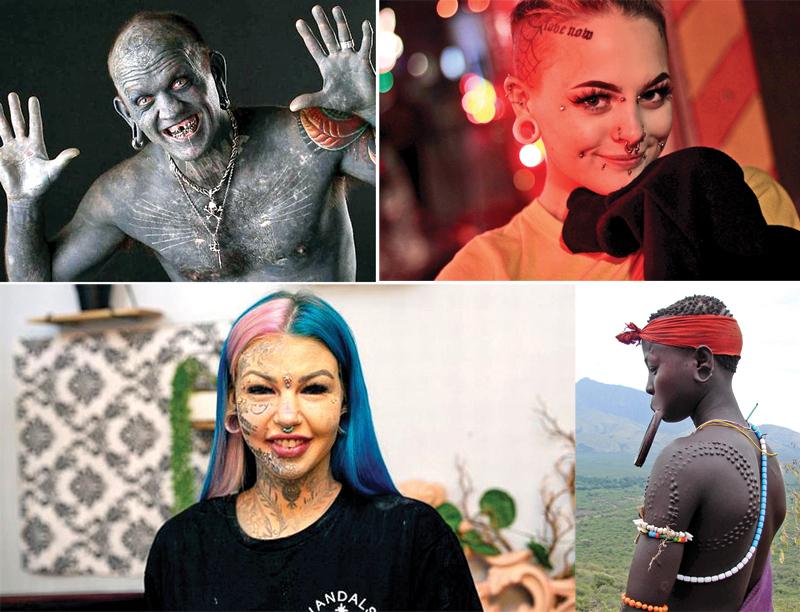
Body modification is defined as the deliberate alteration of one’s physical appearance and anatomy for non-medical purposes. While the term body modification invokes an instinctual feeling of discomfort and disgust for those only passingly familiar with it, the definition is broad enough to encompass many regular practices that we consider to be normal.
Things like ear piercing, hair removal and even hair cutting counts as purposeful, non-medical alteration of physical appearance. But generally, the term is used to refer to the more drastic body modifications such as tongue splitting, ear stretching and subdermal implants.
History
The history of body modification dates back to thousands of years. Tattooing, one of the most popular forms of body modification today can be traced back to as early as 3400 BCE with the discovery of Ötzi the Iceman. Ötzi’s mummified remains also proved that humans practiced ear piercing as well as ear stretching back then.
Nose piercings were recorded to be a common practice in the Middle East around 4000 BC and nose rings were even mentioned in the original Hebrew text of the Bible.
Even more obscure modifications like genital piercings have had a long historical presence, having been mentioned in the Kama Sutra which was thought to be as old as the third century CE.
Despite history showing a consistent presence of body modifications, the reasons and meanings behind those modifications have been anything but consistent.
Some of the myriad of reasons include religious beliefs, to enhance sexuality and attractiveness, as traditional and cultural symbolism, or as a display of affiliation.
Despite this, the most common reason for the most popular forms of body modifications like tattooing and piercing is aesthetic self-expression or preference.
Social disdain
Even though body modification has been practiced for as long as humans have lived, there is a persistent social disdain of body modification. Those against it, usually conservative and orthodox people, describe body modification with terms like ‘disfigurement’ and ‘mutilation’ in order to create an image of deviancy. Certain people also call in to question the psychology of those undergoing body modifications. While it is true that certain individuals undergo modifications as a result of certain mental disorders, that is only representative of a very small percentage of people.
More concrete criticisms stem from the lack of anesthesia used in more extreme modifications. Since the use of General Anesthesia and injectable anesthetics is normally illegal for non-medical practitioners, modifications like tongue splitting conducted by body modification artistes without medical credentials usually have no appropriate anesthesia.
Legality
Another concern is the legality. As the more extreme body modifications require what can be classified as surgery, it is generally illegal in some countries for artistes to conduct certain kinds of modifications on people. However, as was the case with tattooing, body modification artistes understand the risks involved and instead call for regulation. Under proper control, people would be able to seek safe and consensual modifications from medically trained professionals instead of underground amateurs.
Ultimately, if done for the right reasons, body modification can be a great tool for self-expression. While there is a certain societal disdain towards modifications, even towards the less extreme ones, those who think like that are quickly becoming a minority. As artistes continue to develop techniques and educate their clients properly on all the risks involved, people will continue to be able to safely and consensually express themselves in whatever way they please.
